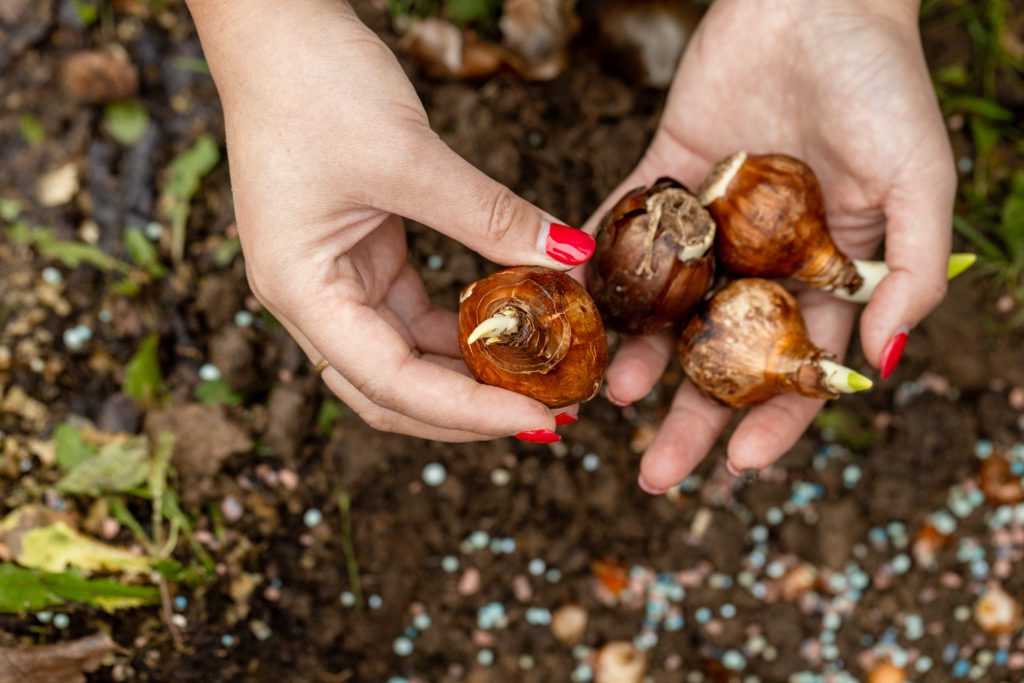Planting bulbs at the correct depth is crucial for their successful growth and flowering. The general rule of thumb for planting bulbs is to plant them at a depth that is three times their height. Here’s a more specific guide for common bulbs:
Spring-Flowering Bulbs
- Tulips: Plant 6-8 inches deep.
- Daffodils (Narcissus): Plant 6-8 inches deep.
- Hyacinths: Plant 6-8 inches deep.
- Crocuses: Plant 3-4 inches deep.
- Snowdrops (Galanthus): Plant 2-3 inches deep.
Summer-Flowering Bulbs
- Lilies: Plant 6-8 inches deep.
- Gladiolus: Plant 4-6 inches deep.
- Dahlias: Plant the tubers just below the surface, about 1-2 inches deep.
- Begonias: Plant 1-2 inches deep.
- Cannas: Plant 4-6 inches deep.
Autumn-Flowering Bulbs
- Autumn Crocus (Colchicum): Plant 3-4 inches deep.
- Sternbergia: Plant 3-4 inches deep.
General Tips
- Soil Preparation: Ensure the soil is well-draining. If the soil is clay-heavy, consider amending it with sand or organic matter to improve drainage.
- Spacing: Allow sufficient space between bulbs, typically about 2-3 times the width of the bulb.
- Orientation: Plant bulbs with the pointed end facing up. If you’re unsure, plant the bulb on its side; the plant will find its way up.
- Watering: Water the bulbs well after planting to help them establish roots.
Special Considerations
- Depth Variation: For very small bulbs (like crocus), a shallower planting depth is sufficient, whereas larger bulbs (like tulips and daffodils) require deeper planting.
- Climate Adjustments: In colder climates, bulbs may need to be planted slightly deeper to protect them from freezing temperatures. In warmer climates, slightly shallower planting might be better to avoid rot.
By following these guidelines, you can ensure your bulbs are planted at the optimal depth for healthy growth and beautiful blooms.
